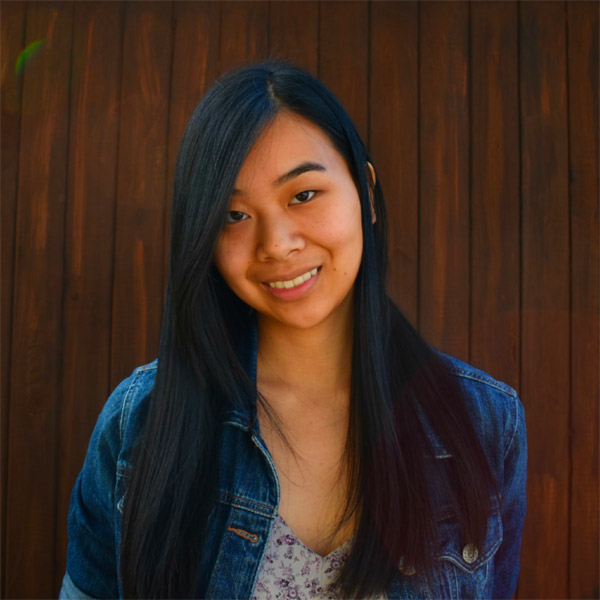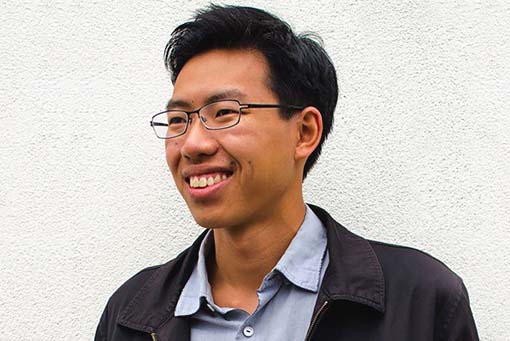Holiday Reading Session
When: Tuesday, December 18, 7:00 to 8:30 p.m. Let us know you’ll attend by emailing info@kogawahouse.com.
Join us for an evening that spotlights local emerging writers, including Natalie Lim, winner of the 2018 CBC Poetry Prize. Natalie will read with a list of amazing new writers. Here they are:

Thi Tran is a Vietnamese Canadian writer and artist. She is a 2017 graduate of SFU’s The Writer’s Studio, and just returned home from a writing residency for emerging writers at the Banff Centre for Arts and Creativity.
She is working on her first book-length project: a coming-of-age memoir about growing up with a single mother in East Vancouver. She still lives and writes in East Van.

Vincent Ternida is a screenwriter, filmmaker, and author with several published short fiction and creative non-fiction pieces. He was a second rounder for Austin Film Festival’s screenplay competition and a finalist for Writer’s Guild of Canada’s Diverse Screenwriters in 2013. The Seven Muses of Harry Salcedo is his first novel. He lives in Vancouver.

Charlene Sayo, the co-author of Canada: The New Frontier for Filipino Mail-Order Brides, has spoken on issues regarding Filipino-Canadian women, youth, and feminist media domestically and internationally. She served as a production consultant for the Canadian premiere of Dogeaters and Pinoyville, as apprentice assistant director for Nanay: A Testimonial Play at the 2009 PuSh International Performing Arts Festival.
Besides being the former executive director of the Philippine Women Centre of BC, Charlene was an editor at Mainlander magazine, has been featured in the Vancouver Sun and the Manila Times, and produces the feminist podcast, MsRepresent: Behind the Face, a Fierce Woman.

April dela Noche Milne is an artist interested in issues of race, gender, and representation. April studied fine arts at Langara College, and graduated with a bachelor of fine arts in illustration from Emily Carr University of Art + Design in 2014.

Carlo Javier is currently the outreach coordinator at the BC Freedom of Information and Privacy Association, a contributor to Philippine Canadian News, and the former editor-in-chief of the Capilano Courier.
By night, he’s either working on his first endeavour in fiction or telling people that he still plays basketball regularly. Carlo was shortlisted for the John H. McDonald Award for Arts and Culture Writing in 2017 by the Canadian University Press. His piece was called Champagne Papi, but it was not about Drake.

Natalie Lim is a poet, communications student at Simon Fraser University, and winner of the 2018 CBC Poetry Prize for Arrhythmia, her first published work.
More than anything, she loves stories—whether told through a book, podcast or video game—and she hopes to keep writing them for life.
Good Food and Good Writing
When: Saturday, December 29, 4:00 to 8:00 p.m.
Join us for a unique event to celebrate the festive season. It blends together two different ingredients: good food and good writing. In response to the refreshments provided, your task is to consider how your senses react to the different foods, and then to ponder their effect on your writing. Only 20 spots are available for this event, so please register quickly before space runs out! Let us know if you have any allergies or dietary preferences so that we can accommodate you.
To register, email info@kogawahouse.com.
Both events are hosted by our writer-in-residence William Wai Liang Tham. Here is William’s most recent blog post:

Gardeners and Architects
(Guest Post by William Wai Liang Tham)
In an interview with The Guardian, George R.R. Martin spoke about two types of writers. Gardeners tend to write in a more organic fashion, eschewing the meticulous planning that Architects put into constructing their stories.
“The gardeners dig a hole, drop in a seed and water it. They kind of know what seed it is, they know if planted a fantasy seed or mystery seed or whatever. But as the plant comes up and they water it, they don’t know how many branches it’s going to have, they find out as it grows.”
He considers himself a gardener.
The same approach holds for Andre Dubus III and Ernest Hemingway. Meanwhile, JK Rowling meticulously plotted the details of her novels before starting her writing process, and so did Sylvia Plath. Bear in mind though that these are not mutually exclusive categories. My first introduction to the writer’s process was Rowling’s epiphany on a train journey to London: Harry simply strolled into her head and she began the meticulous outlining that would characterize her work.
I began by writing pulp fiction for Malaysian independent publishers, primarily Buku Fixi. Writing in accordance with the conventions of genre writing were remarkably fun to follow, and I would simply lose myself hammering out stories at my laptop on my commute or even at a pool table after everyone had gone to asleep. I could write lurid political thrillers and hard-boiled crime novels. Outlining was a foreign concept. The stories just seemed to reveal themselves organically. Therefore I did not actively think about the standard elements of storytelling and literary devices—climaxes, intertextuality, allegories, points of views, unreliable narrators. I only learned the formal conventions of fiction along the way. Back then it wasn’t a discipline to me. Instead it was good escapist fun.
Things changed once I began to write longer fiction. When it came to novels, there was a great deal of complexity involved and my trial-and-error methods were terribly insufficient. My first real experience of outlining happened with the manuscript of my first novel, Kings of Petaling Street.
On the surface it was a fairly standard piece of crime fiction, but at its heart I wanted to explore ideas of the cyclic natures of violence and fate. The characters ran the gamut from retiring kingpins, reluctant assassins, vindictive policemen, and religious charlatans. Therefore, it was important for me to plot out the details of each chapter before I committed them to writing to keep the narrative flowing smoothly.
This approach seemed to work, and I discovered the power of outlining. Some years later I took the art of outlining to a new level for Manuscript No. 2. My story was constructed almost mathematically, based on geometric concepts of the Rub el Hizb. I built upon the symbol’s structure as the basis of my manuscript, which married the concept of Malaysia’s historical memory and the trappings of a film noir thriller. This proved exhausting and I put more time into the outline than the actual writing.
For my current project, Manuscript No. 3, I toned down my approach. I wanted to enjoy the process of outlining for a change. I started out with a group of characters and a setting that I liked. I did plot laboriously from beginning to end, but rather I listed a series of episodes that I would subsequently rearrange in a way that made sense. I sometimes worked lying down on the floor in front of a massive sheet of paper, filling in the elements as I went along. This way, I could sort out elements so that they made sense, overlaying them on a standard three act structure while trying to balance the characters against each other.
I make the process sound more disciplined than it really was. The reality was that I let loose and simply allow the story the space to grow, after which I trimmed it into shape. I suppose that makes me more of a Gardener, even though I borrowed principles loved by Architects.
One key piece of information that I have withheld is that the three manuscripts evolved from unstructured short pieces of writing. They were road trips where I had a hazy destination, but no map in mind. Kings of Petaling Street began life as the recollections of a petty gangster in a piece called Ah Beng’s Wedding, featured in KL Noir: Blue; Manuscript No. 2 was a short story about a fugitive Communist operative; and Manuscript No. 3 began life as a The Revolutionaries, featured in Looseleaf. It was a piece about a group of politicized students on a road trip from the Prairies to Vancouver during the Long Sixties. Although I eventually decided to set the story in a magazine office in 1981 instead, one character survived the transition and the outline grew around him.
The fundamental nature of all three manuscripts ended up being very different from where I started out, but it was important for me to go along that uncharted journey of exploration. And the process of discovering and structuring my manuscript helped me create works that I was ultimately happy with.
We acknowledge the support of the Canada Council for the Arts.
Nous remercions le Conseil des arts du Canada de son soutien.

